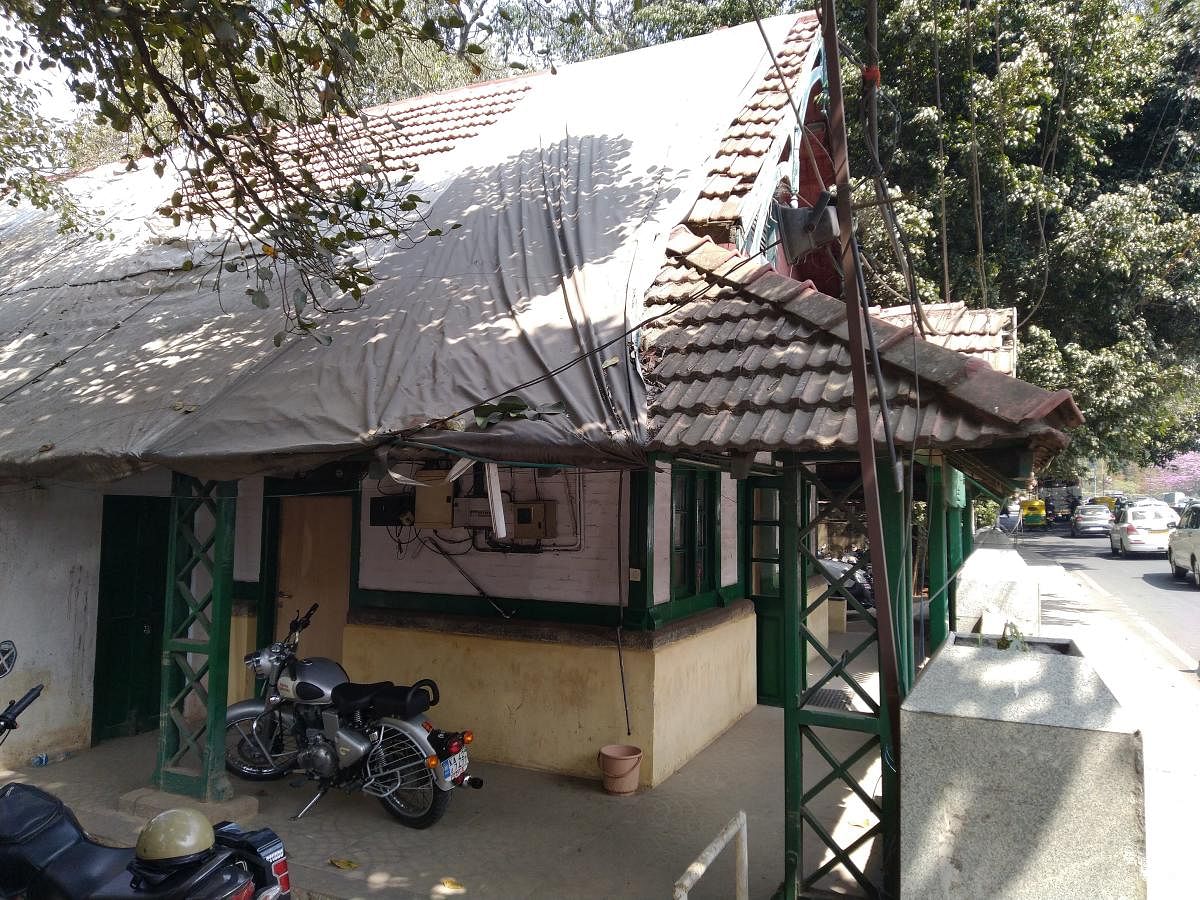Where a barter moved a police station


A pleasantly old-world building stands on the busy Kasturba Road in Bengaluru. With its steeply sloping roof and monkey top, it often attracts a second glance from passers-by. Emblazoned above the door is the year it was built, 1910, and the words ‘Police Station’.
The story of the Cubbon Park Police Station begins a few years earlier, however, and brings together a statue, boundary disputes, concern about Cubbon Park, and more.
The saga begins with the unveiling of the statue of Queen Victoria on February 5, 1906. Next to the statue stood a police station that had been there for a few decades already. This police station irked the man in charge of Cubbon Park, G H Krumbiegel, then the Superintendent of Government Gardens in the Maharaja’s administration.
Krumbiegel wanted the police station removed so that the ‘bareness of the situation’ near the statue could be relieved.
But this was not an easy matter because there were boundaries and hence bureaucracies involved. Though both Cubbon Park and the Victoria statue were within the portion of the city that was administered by the Mysore Maharaja’s government, the police station next to the statue was under the British-administered Civil and Military (C & M) Station of Bengaluru. The C & M Station authorities recognised the need to move the police station, but they wanted another spot close by for it to move into.
And so began the negotiations between Dewan V P Madhava Rao, the British Resident (first, acting Resident Albert Williams and later, Stuart Fraser), the District Collector and sundry other officers in both administrations. Like any good barter, each party wanted to give only as much as was taken. But what also stands out is the concern for Cubbon Park itself.
Albert Williams said that he ‘did not like the idea of taking up a part of the park for this purpose.’ Sadly, the alternatives suggested, such as moving the police station to the compound of either the Bowring Institute or the Madras Bank (where State Bank of India now stands) fell through since neither institution obliged. And so, the C & M Station asked the Maharaja’s administration for some land in Cubbon Park for a new police station.
The site that the C & M authorities chose was a portion of Cubbon Park that was adjacent to a 12-acre property named Prospect House.
Naturalists and older Bengalureans will recognise this as the house that was later occupied by the celebrated hunter, naturalist and writer, Kenneth Anderson and his family. Innumerable meetings and letters were exchanged over the exact amount of land to be exchanged: 9,243 square feet versus 7,740 square feet, 949 square yards versus 1,004 square yards, and so on.
At one point, Dewan Madhava Rao intervened to ask for changes in the proposed plan specifically so that the building did not cut too much into the park and ‘spoil its appearance.’
Finally, three years after the subject had first been mooted, the C & M Station got 949 square yards (793 sq m) from the Maharaja’s territory in exchange for 1,013 square yards (847 sq m) that had been occupied by the old police station.
The boundary between the two cities of Bengaluru was redrawn and notified, showing a small enclave of the C & M Station containing the new police station jutting into the Maharaja-administered city.
The new brick building, the police station that we now see, was completed a year later.
It was only a short distance south of the old station (which was dismantled) but it served Krumbiegel’s purpose: the horticulturist immediately set about beautifying the area near the Victoria statue, planting flowering shrubs and erecting ornamental railings.
Modifications
Over the last 110 years, the original police station has been considerably enlarged with several additions behind and near it. The interiors now have false ceilings and wooden panelling. The low monkey-top on the verandah’s roof emphasises the entrance and gives the building a cottage-like feel.
This is accentuated by the gable window and decorative eave boards on the sloping roof directly above the monkey top.
A verandah originally ran around the building, but this is now partly enclosed on one side. Note also an unusual and prominent right around the building.
The Mangalore-tiled roof now looks a little unsightly for having been covered with a sheet.
However, with its original façade still intact, this is one of many heritage police stations that add their charm to the city’s street-scape.
(The author is a writer, independent researcher and the convenor of INTACH Bangalore Chapter)